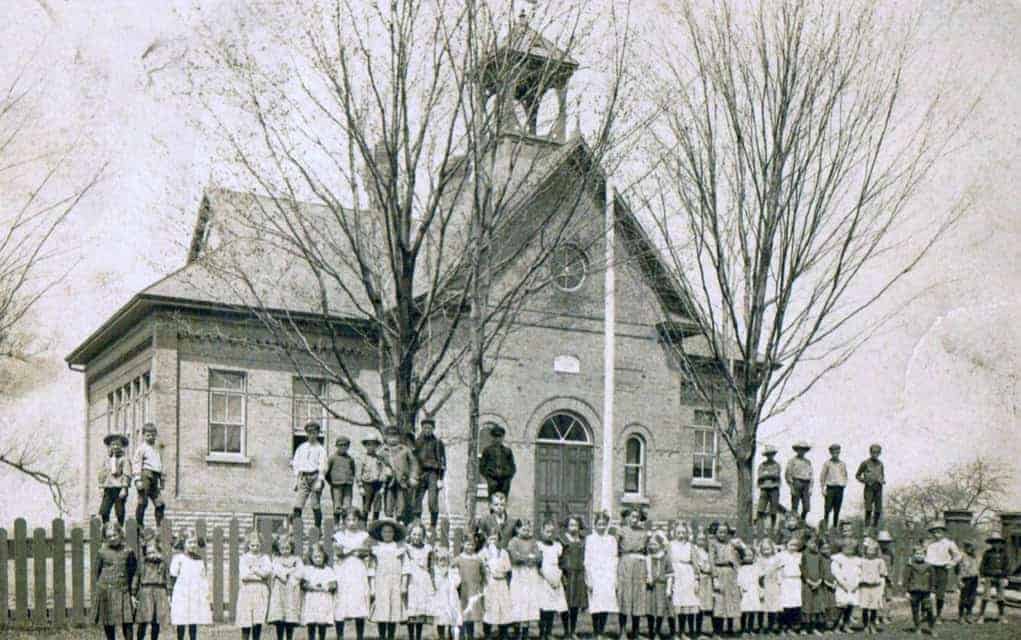The area’s pre-1951 structural history is now available all in one location as a way to increase awareness about the buildings that have served the cities and townships.
Some 220 properties make up the Waterloo Region Public Building Inventory, which was created by the Region of Waterloo’s Heritage Planning Advisory Committee over the course of six years. This includes a separate inventory for educational buildings, including numerous one-room schoolhouses.
Lindsay Benjamin, cultural heritage planner for the region, says there are plenty of notable structures in Woolwich and Wellesley townships in the documents.
“We included the Gore Park Bandstand in Elmira, which is quite interesting. It was constructed in 1912 and it’s kind of a unique part of this public building inventory. Although the title might be deceiving, we didn’t just inventory buildings, we also inventoried public parks, bandstands, and things like that. There’s also the St. Boniface Catholic School in Maryhill, that’s the oldest Roman Catholic school in the region, constructed in 1898. It’s part of the whole Roman Catholic influence in Maryhill,” Benjamin said.
Some others include the St. Jacobs Library, which was built in 1934, the former Elmira post officer, the former Conestogo Public School, which has been turned into a home, and the Wellesley council chambers.
“There’s the Linwood fire hall, which is quite interesting and that’s a building that you might never recognize was once what it was. That’s at 5159 B Ament Line. Now it’s covered in siding, it’s a white building. It’s got kind of an interesting front that juts out above of the roofline. Now it just kind of looks like a garage,” Benjamin said.
![Some 220 pre-1951 structures make up the new Waterloo Region Public Building Inventory, including as seen here, the Wellesley School, 1137 Henry St., and the former Linwood fire hall, 5159-B Ament Line.[Submitted]](https://www.observerxtra.com/content/images/wp-content/uploads/2016/03/post_news_buildings.jpg)
The Wellesley fire shed at 1200 Queens Bush Rd. in Wellesley village is also in the inventory. It used to be a restaurant.
Nancy Maitland, curator for the Wellesley Township Heritage and Historical Society, says they’re grateful to the committee for undertaking the project and doing such a thorough job.
“The study is a wonderful addition to the resources we have in our historical room,” Maitland said.
The inventory began with the Heritage Planning Advisory Committee who initially looked at 100 buildings. They included 30 from that list and then the project wasn’t finished for a couple years. Their summer student last year, James Arteaga, picked the project back up again. They were hoping just to publish it as it was but he ended up doing more research and grew the inventory to where it now stands.
Ron Hackett, former WTHHS chairman, drove Arteaga throughout Wellesley to show him some of the buildings, which he then photographed for the inventory. WTHHS also added historical pictures to the project.
“We were happy to be able to provide historic photos of some of the buildings from our collection. I think the information about the schools that we have on our website was helpful to them,” Maitland said.
While educational buildings weren’t originally planned to be part of the inventory, Benjamin says they’re a great addition because they helped broaden the scope of structures. Many of them are one-room schoolhouses, which the committee had always wanted to do some work on because many are quickly being turned into private residences or demolished.
“The section on the history of education in Ontario and how it relates to changes in township schools is invaluable,” Maitland noted.
“It puts our information, and that of the other townships in a much broader context. The detailed analysis of the findings is not something we could have ever done, so to have access to it is very helpful.”
She adds that the photos, maps, references and charts are all professionally done and will help researchers in the region and beyond.
Benjamin says they’d like the inventory to keep growing. They tried to include as many buildings as possible, but they could have missed some because it can be hard to tell what buildings might have originally been. She expects it to expand as they learn more and people from the public provide more information.
“What we’re really hoping is that it will be a way to acknowledge these purpose-built public buildings in the region. They’ve played a really central role in the growth and development of all of the local communities in the region over really the past two centuries since some of the earliest settlers arrived here. The goal was to increase awareness of the structures and to support future heritage conservation efforts, even adaptive re-use projects as well. A lot of these structures have pretty outstanding or interesting architecture, so they could be good candidates for a new life and redevelopment,” Benjamin said.
She notes the inventory could also be useful for property owners and investors. If the committee can showcase some of the buildings’ significance, interesting history or architectural integrity then there might be some more interest in preserving them for the long term.
“The intention of public buildings is that they’re built to serve the needs of communities and what people relied on day to day. And for a lot of those uses we still rely on them day to day. I think that might be an interesting piece for people to focus on, maybe just to draw attention to some of the gems that exist in their community that they didn’t really know anything about,” Benjamin said.
The inventories can be viewed at www.regionofwaterloo.ca.









